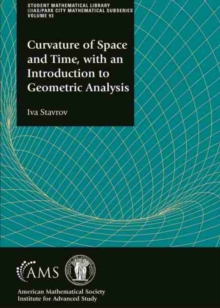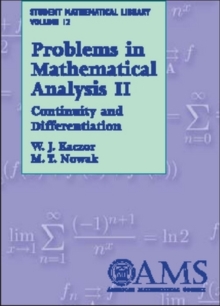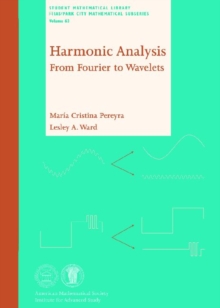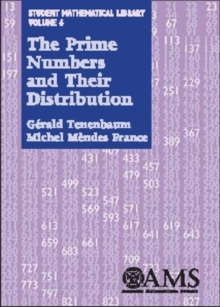
Lectures on Contemporary Probability Paperback / softback
by Gregory F. Lawler, Lester N. Coyle
Part of the Student Mathematical Library series
Paperback / softback
- Information
Description
This volume is based on classes in probability for advanced undergraduates held at the IAS/Park City Mathematics Institute (Utah).
It is derived from both lectures (Chapters 1-10) and computer simulations (Chapters 11-13) that were held during the program.
The material is coordinated so that some of the major computer simulations relate to topics covered in the first ten chapters.
The goal is to present topics that are accessible to advanced undergraduates, yet are areas of current research in probability.
The combination of the lucid yet informal style of the lectures and the hands-on nature of the simulations allows readers to become familiar with some interesting and active areas of probability.
The first four chapters discuss random walks and the continuous limit of random walks: Brownian motion.Chapters 5 and 6 consider the fascinating mathematics of card shuffles, including the notions of random walks on a symmetric group and the general idea of random permutations.
Chapters 7 and 8 discuss Markov chains, beginning with a standard introduction to the theory.
Chapter 8 addresses the recent important application of Markov chains to simulations of random systems on large finite sets: Markov Chain Monte Carlo.
Random walks and electrical networks are covered in Chapter 9.
Uniform spanning trees, as connected to probability and random walks, are treated in Chapter 10.
The final three chapters of the book present simulations.
Chapter 11 discusses simulations for random walks.Chapter 12 covers simulation topics such as sampling from continuous distributions, random permutations, and estimating the number of matrices with certain conditions using Markov Chain Monte Carlo.
Chapter 13 presents simulations of stochastic differential equations for applications in finance. (The simulations do not require one particular piece of software.
They can be done in symbolic computation packages or via programming languages such as C.) The volume concludes with a number of problems ranging from routine to very difficult.
Of particular note are problems that are typical of simulation problems given to students by the authors when teaching undergraduate probability.
Information
-
Available to Order - This title is available to order, with delivery expected within 2 weeks
- Format:Paperback / softback
- Pages:110 pages, illustrations
- Publisher:American Mathematical Society
- Publication Date:30/08/1999
- Category:
- ISBN:9780821820292
Information
-
Available to Order - This title is available to order, with delivery expected within 2 weeks
- Format:Paperback / softback
- Pages:110 pages, illustrations
- Publisher:American Mathematical Society
- Publication Date:30/08/1999
- Category:
- ISBN:9780821820292



